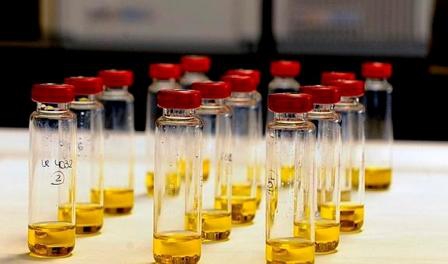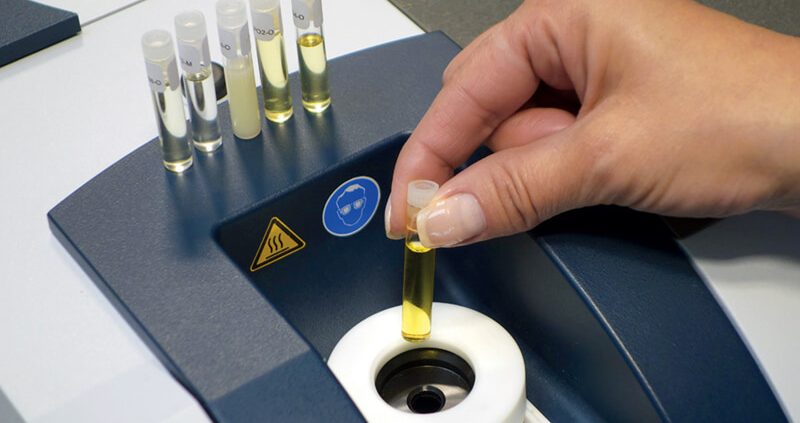Acidity of olive oil
Acidity of olive oil is one of the parameters that measure the quality of olive oil, but it also depends on the variety of the olive and the place of origin. For this reason, it cannot base the quality of the oil solely on acidity. Prestigious brands are using acidity as a classification parameter for olive oils, actually confusing the consumer.
The quality parameters of olive oil are year of production, organoleptic score, level of peroxides, acidity, k-232, k-270, etc.
Index:
|
Summary: The acidity of olive oil is a measurement that can only be taken by a laboratory. Its numerical value has a relation with the quality, but it cannot be used correctly to classify the quality between different olive oils. Also, in our shop in Las Rozas de Madrid you have at your disposal a fantastic selection of olive oils from: Baena, Sierra Magina,Priego de Córdoba, Jaén, etc.
Other interesting articles: Where to buy extra virgin olive oil? Benefits of olive oil
1. Olive oil acidity index
Fatty acids can appear in oils or in their molecular form as free or as radicals that make up triglycerides. The acidity of the oil, or degree of acidity, refers exclusively to the percentage amount of free acids in a sample.
The index or degree of acidity is defined as “the amount by weight of free acids in 100 grams of oil”. However, it is agreed that the index or degree of acidity, given the majority proportion of oleic acid, is defined, for olive oil in practice, as follows: “the amount by weight of free oleic acid in 100 grams of oil”.
Therefore, when we say that the degree of acidity of an oil is 0.4, it means that in 100 g of oil there is 0.4 g of free oleic acid.
2. Olive oil 0.4 Information or deception?
There are therefore oils with different degrees of acidity of olive oil, and in general this index, together with others, is a measure of the quality of the oil, but it has nothing to do with the taste of the olive oil, since these components give neither taste, colour nor smell to the olive oil.
a) Hydrolysis
Hydrolysis is responsible for raising the acidity level of oils. Therefore, in general, the higher the degree of acidity of an oil, the more deteriorated it is. However, it is necessary to take this data with caution because there are quality oils with high levels, because the acidity is also determined by the variety and the climatic factors of the place of origin.
For hydrolysis to take place, the presence of water and a rise in temperature are necessary. Thus, there are two factors that favour the hydrolytic process: heat and humidity, which are responsible for the high degree of acidity of an oil.
b) Factors
Deficient milling with excessive beating time and the rise in temperature that this entails, or the rise in temperature itself by the manufacturer in his desire to extract more extra virgin olive oil. Furthermore, the presence of water from excessive washing of the fruit beforehand, are determining factors in controlling acidity. Good milling is essential to obtain a quality oil.
The hydrolysis process is also favoured by the presence of enzymatic catalysts from micro-organisms in contaminated oils, in particular the presence in the fruit of the parasite ‘Dacus oleae’ or ‘olive fly’, endemic to many areas, produces increases in acidity. The fruit to be milled must be free of parasites.
Hydrolysis is also encouraged by the prolonged stunting of the olives, which encourages the appearance of various parasites in the fruit. It ocurrs especially in very ripe olives, by the presence of damaged fruit. Furhtermore, to a large extent, by the lack of cleanliness and hygiene of the oil mill installations.
In any case, low acidity guarantees good quality extra virgin olive oil. In the rest of the refined oils it is not an indication of quality, as it is lowered by means of chemical processes.

Photo 1: Olive oil analysis
3. Acidity of sunflower oil and other refined oils
The oil of sunflower, peanut, corn is obtained by means of processes of chemical extraction and high temperatures, using authorized solvent. That they are authorized has nothing to do with being healthy, since hexane is used. However, this product is very poisonous, although it is then subjected to high temperatures for its complete elimination.
It should be borne in mind, unlike virgin olive oil, that the seeds can not be obtained oil only by physical procedures, squeezed, because of the seed, despite how much squeezing, no drop of oil comes out.
Subsequently, in order to correct defects of these chemical processes may have created the extraction, it undergoes a refining process. During the refining process, phospholipids, metals and free fatty acids are eliminated, the latter being the ones that give the acidity to the oil. Likewise, during extraction the oil can take on darker colours, so that it could also undergo a deodorisation process, finally obtaining a lighter and more uniform oil.
4. Can our palate detect acidity?
Known oil brands have set the acidity of the oil as a differential value. The acidity of the oil can only be detected by a laboratory and has nothing to do with taste. It is true that acidity is a sample of quality. However, in the case of all refined oils, it is a chemical variable that can be adjusted to the values one wants.
The best option is to stop consuming refined oils, which are all from seeds. Consecuently, you should use for every culinary dish a good extra virgin olive oil. If the extra virgin olive oil of the most common varieties, picual, cornicabra or other softer, such as hojiblanca seem somewhat strong and flavored, you should go to the varieties of extra virgin soft, arbequina and empeltre.
An extra virgin olive oil contains all the benefits of the fruit from which its oil comes, the olive. Refined oils have undergone complex processes where most of their beneficial components have been left by the wayside.
5. Calculating the acidity of olive oil
Calculating the acidity of olive oil is difficult, but it is not that difficult. Here we are going to explain how to do it, but we do need to buy some laboratory materials.
Therefore, the necessary material is the following:
- Precision scales: The more accurate the better, but at least with a margin of error of 0.01g.
- Erlenmeyer flask: This is a very commonly used utensil in laboratories. It consists of a glass container with a wide base and a wide mouth. This utensil allows mixtures to be mixed well and prevents them from spilling out of the flask.
- Burette
- Phenolphthalein
- Ethyl alcohol or ethanol
- Aqueous solution of NAOH.
Source:
Revista Olive Oil Times https://www.oliveoiltimes.com/







Leave a Reply
Want to join the discussion?Feel free to contribute!